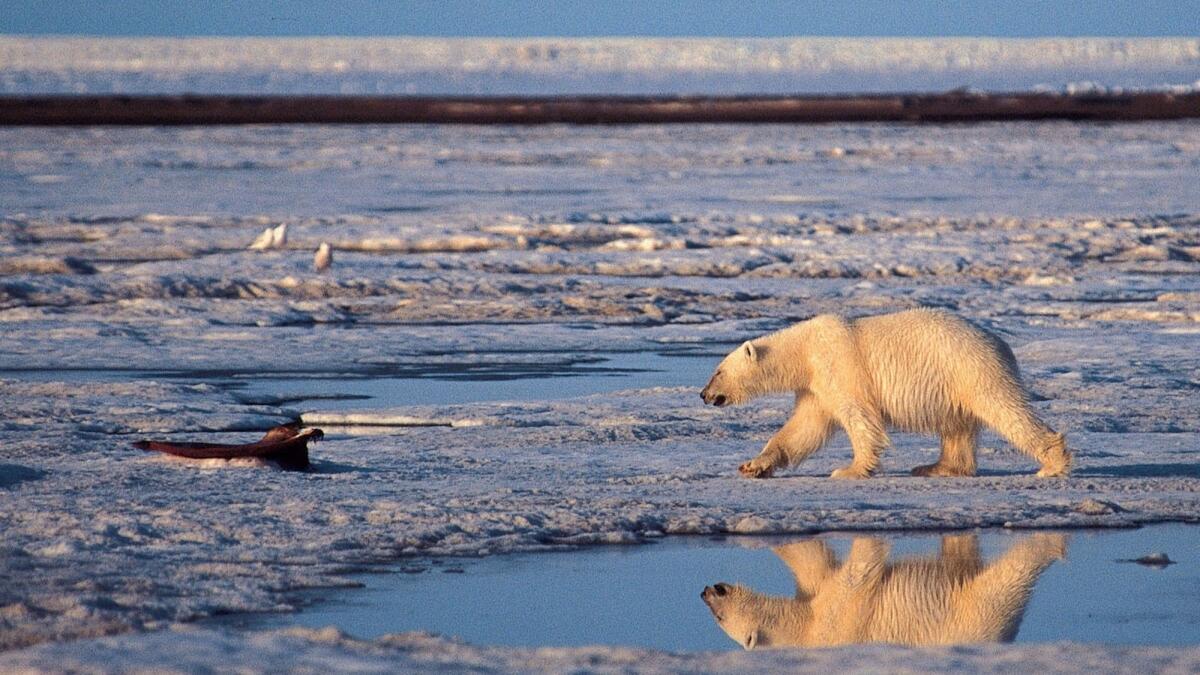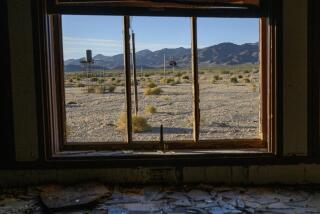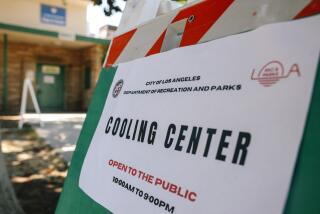A little extra global warming will mean a lot more habitat loss for plants and animals, study says

What difference does half a degree Celsius of global warming make?
To many plants and animals, and especially insects, it could mean the difference between life and death, according to a new study.
In a paper published Thursday in Science, researchers report that limiting global warming to 1.5 degrees Celsius above the average pre-industrial global temperature would avoid half the risks of global warming to plants and animals and two-thirds of the risk to insects compared to 2 degrees of warming.
The new analysis was inspired in part by the 2015 Paris climate agreement in which 176 countries agreed to work together to limit global warming to 2 degrees Celsius, with an ultimate goal of keeping the temperature from climbing no more than 1.5 degrees.
“All the previous scientific literature looked at 2 degrees as the lower limit because that was what was being discussed at the time,” said Rachel Warren of the University of East Anglia in Norwich, England, an environmental biologist who led the new work. “After the Paris agreement, the landscape changed. We wanted to know what the benefits would be to limit warming globally by an extra .5 degree.”
In the new work, Warren and her colleagues analyzed how the geographical ranges of about 100,000 species of terrestrial plants and animals would be affected by several different warming scenarios.
“Basically, every plant, animal and insect has a range of climates where it’s happy,” she said. “Outside of that range, it gets a little bit uncomfortable, and eventually gets to where it can’t survive at all.”
The researchers found that 18% of insects, 16% of plants and 8% of vertebrates will lose more than half their geographical range if the average global temperature is two degrees hotter than it was before the industrial revolution.
If the warming can be limited to 1.5 degrees above pre-industrial levels however, that risk drops significantly. In this scenario, only 6% of insects, 8% of plants and 4% of vertebrates would be expected to see more than half their geographical range disappear.
The authors also looked at what would happen if the Earth warmed by 3 degrees by 2100, which is what is projected to occur if members of the Paris accord met their current pledges to reduce emissions by 2030 but then did nothing else.
In that case, 49% of insects, 44% of plants and 26% of vertebrates would see more than half of their geographical range disappear.
“The takeaway is that if you could limit warming to 1.5 degrees, the risk to biodiversity is quite small. At 2 degrees it becomes significant, and at 3 degrees almost half the insects and plants would be at risk,” Warren said.
To come to this conclusion, the authors started by looking at the geographical ranges of 100,000 species, including 34,000 insects. This data came from the Global Biodiversity Information Facility, which is an open access database that gets contributions from research institutions all over the world.
For this study, the authors used longitudinal and latitudinal data for each recorded observation of the 100,000 plant and animal species and then, based on that information, calculated what type of climate the individual species need to survive.
Here, climate does not just mean temperature, although that’s part of it, Warren said. It also includes rainfall and seasonal changes.
For example, some plants and animals require temperatures to drop below freezing in the winter to reproduce.
Next, researchers consulted computer models to see how these geographic ranges will shift as the globe gets hotter.
“Picture looking down on North America and seeing shadows that represent the geographical range, what we call the climate envelope,” Warren said. “As the earth gets warmer, these shadows start to move northward.
“The tropics get hotter, the temperate zones get more like the tropics and the polar zones get more like the temperate zones,” she added.
You might imagine that Earth’s biomass also would move northward to remain in its preferred climate shadow, but of course it’s not as simple as that.
Sometimes the models show a climate shadow moving northward into the ocean or into a mountain range that is not a suitable home for certain plants and animals.
The authors also considered the varying abilities of plants, animals and insects to migrate as part of their analysis.
Previous work has shown that mammals and butterflies are adept at moving in response to climate change, while insects, plants and amphibians are not.
The research team was surprised to find that insects were especially susceptible to changes in climate, and Warren said she’d like to investigate that more.
“So far, we have warmed the world 1 degree,” Warren said. “If we warm it another .5 degree by 2100, then some birds and mammals can catch up, but if it gets to 2 degrees, far fewer can catch up and at 3 degrees they won’t be able to keep pace with it.”
Do you love science? I do! Follow me @DeborahNetburn and “like” Los Angeles Times Science & Health on Facebook.
MORE IN SCIENCE
Corals on Great Barrier Reef will never be the same after back-to-back heat waves, scientists say
Polar bears’ bodies work 60% harder than thought — which makes surviving climate change even tougher
Scientists see climate change in action in California wildflower fields







